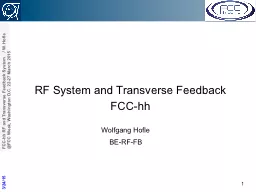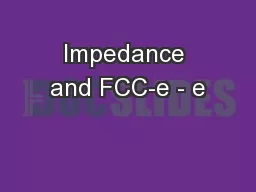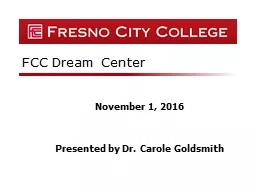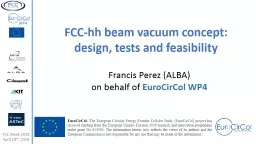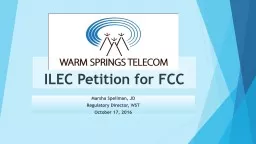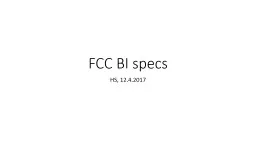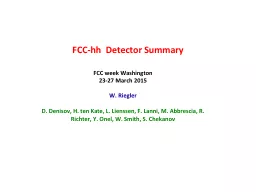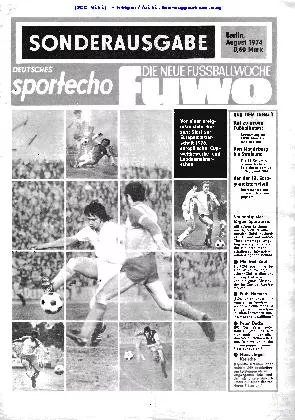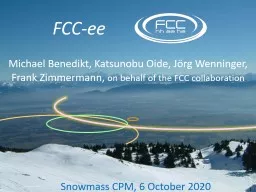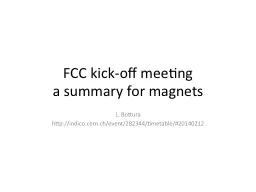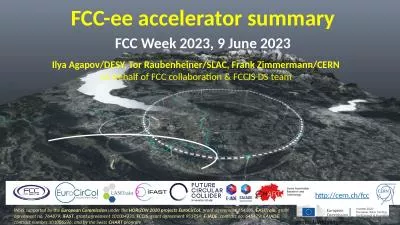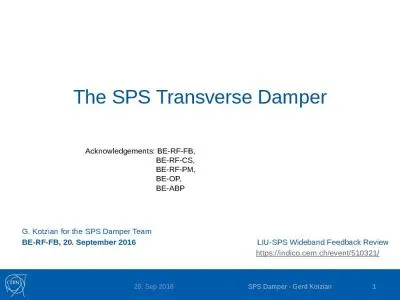PPT-Transverse Feedback FCC-
Author : dollysprite | Published Date : 2020-06-17
hh 1082015 FCChh RF and Transverse Feedback System W Hofle 08 October 2015 1 As presented at the FCC Week With some additional remarks Wolfgang Hofle BERFFB Start
Presentation Embed Code
Download Presentation
Download Presentation The PPT/PDF document "Transverse Feedback FCC-" is the property of its rightful owner. Permission is granted to download and print the materials on this website for personal, non-commercial use only, and to display it on your personal computer provided you do not modify the materials and that you retain all copyright notices contained in the materials. By downloading content from our website, you accept the terms of this agreement.
Transverse Feedback FCC-: Transcript
Download Rules Of Document
"Transverse Feedback FCC-"The content belongs to its owner. You may download and print it for personal use, without modification, and keep all copyright notices. By downloading, you agree to these terms.
Related Documents

